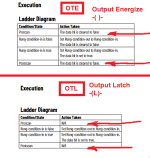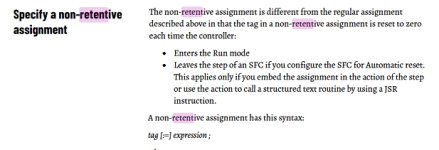drbitboy
Lifetime Supporting Member
Yes, it's a neat piece of code. Widely used, I imagine.
snort. ya' think?
In my original post, the operator wants to be able to control the fans in one of two ways: manually (fans on/off whenever they please) and automatically based on water temperature - if it gets to integer 300 (30 celsius) turn it on, when it's below 30c turn it off.
same pattern, (i.e. start, stop, run/seal-in), but the start and stop booleans are compound expressions e.g.:
start: (auto AND low_temp) OR (not_auto AND operator_button_pressed)
stop is more interesting cf. DeMorgan at this link
Last edited:






